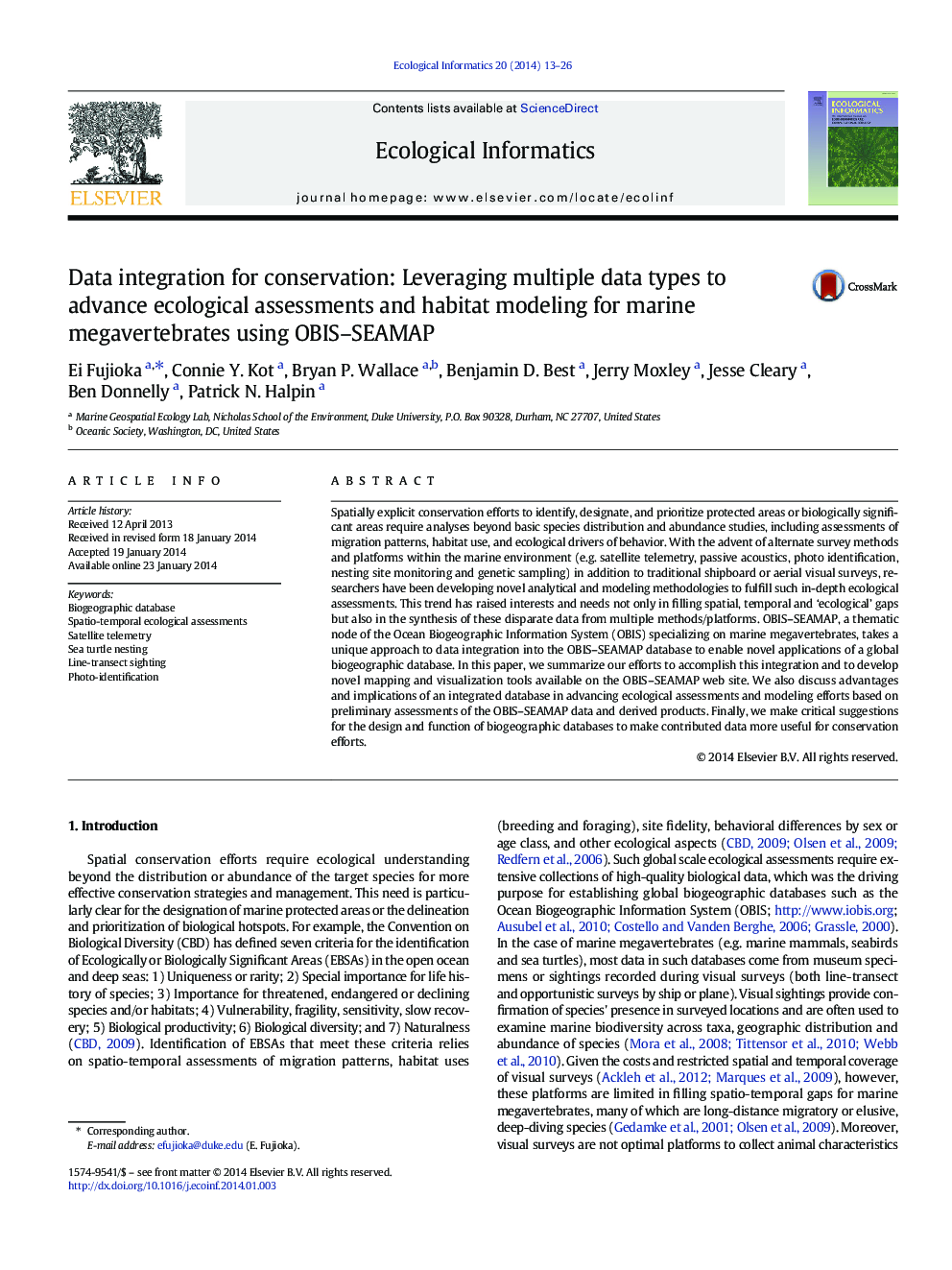| Article ID | Journal | Published Year | Pages | File Type |
|---|---|---|---|---|
| 4374867 | Ecological Informatics | 2014 | 14 Pages |
•We integrated multiple data types into a global biogeographic database.•We developed novel mapping and visualization tools for the integrated database.•The integration fills spatial, temporal and ecological data gaps.•The integration advances ecological assessments and modeling work.•Our efforts will facilitate global conservation efforts.
Spatially explicit conservation efforts to identify, designate, and prioritize protected areas or biologically significant areas require analyses beyond basic species distribution and abundance studies, including assessments of migration patterns, habitat use, and ecological drivers of behavior. With the advent of alternate survey methods and platforms within the marine environment (e.g. satellite telemetry, passive acoustics, photo identification, nesting site monitoring and genetic sampling) in addition to traditional shipboard or aerial visual surveys, researchers have been developing novel analytical and modeling methodologies to fulfill such in-depth ecological assessments. This trend has raised interests and needs not only in filling spatial, temporal and ‘ecological’ gaps but also in the synthesis of these disparate data from multiple methods/platforms. OBIS–SEAMAP, a thematic node of the Ocean Biogeographic Information System (OBIS) specializing on marine megavertebrates, takes a unique approach to data integration into the OBIS–SEAMAP database to enable novel applications of a global biogeographic database. In this paper, we summarize our efforts to accomplish this integration and to develop novel mapping and visualization tools available on the OBIS–SEAMAP web site. We also discuss advantages and implications of an integrated database in advancing ecological assessments and modeling efforts based on preliminary assessments of the OBIS–SEAMAP data and derived products. Finally, we make critical suggestions for the design and function of biogeographic databases to make contributed data more useful for conservation efforts.
